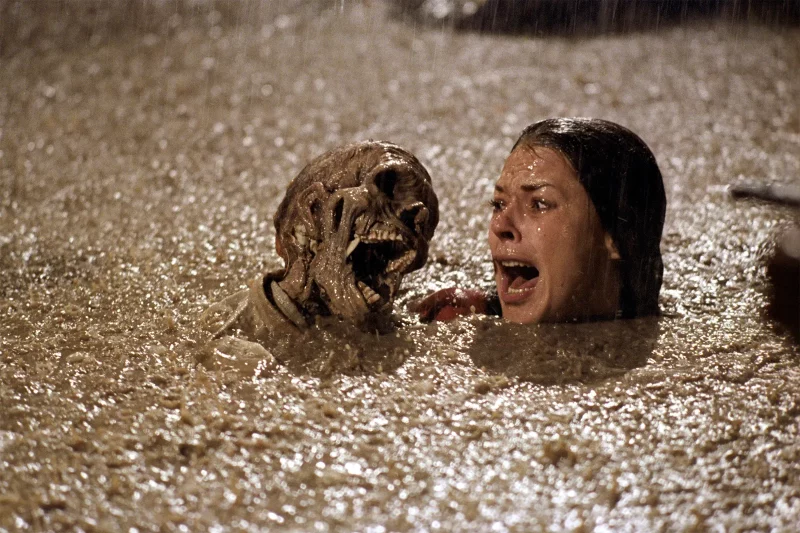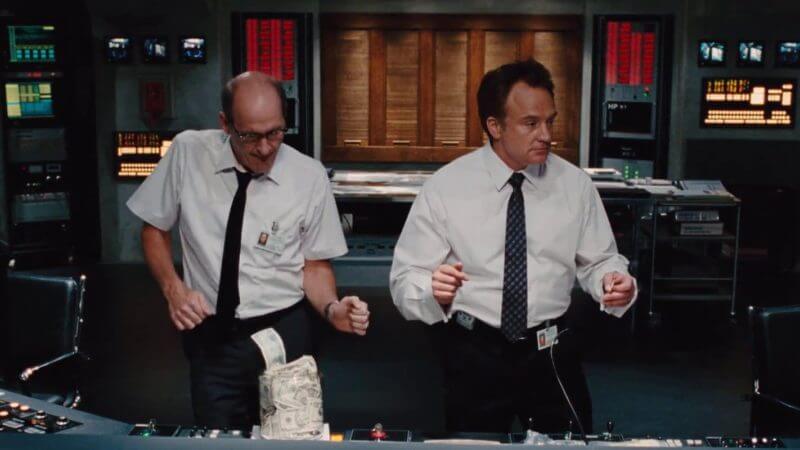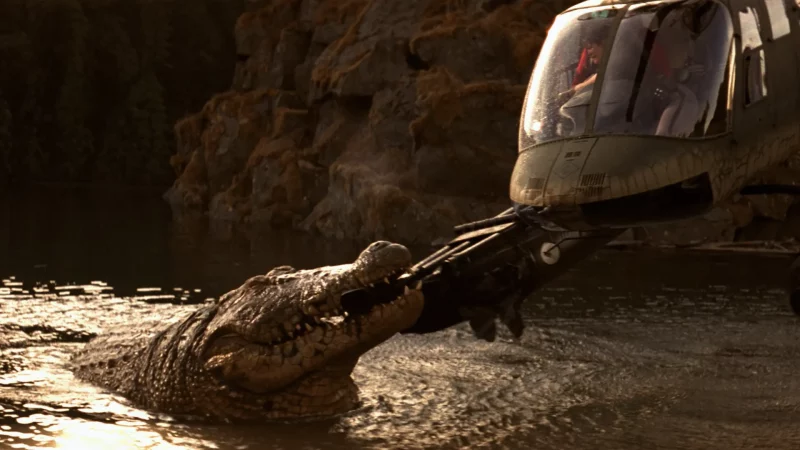There’s something uniquely thrilling about watching a horror movie. The anticipation, the jump scares, the eerie music – it all comes together to create an experience that, while terrifying, is also incredibly captivating.
But why do we subject ourselves to these cinematic frights? What is it about horror movie that keeps us coming back for more? The answer lies in the fascinating world of psychology.
The Thrill of Stimulation
One of the primary reasons we consume horror is to experience stimulation. According to the Harvard Business Review, exposure to terrifying acts, or even the anticipation of those acts, can stimulate us. This stimulation is not just mental, but physical as well. Our heart rate increases, our palms sweat, and our adrenaline spikes. We’re on high alert, ready for whatever the film throws at us. This physiological response is part of the thrill of watching horror films. It’s a rollercoaster ride of emotions, where we oscillate between fear and relief, tension and release.
But let’s delve deeper into this concept of stimulation. It’s not just about the physical reactions – the quickened heartbeat, the sweaty palms. It’s also about the emotional and psychological responses. The fear, the anticipation, the relief – these are all part of the experience. And each of these emotions can stimulate us in different ways. Fear can make us more alert and focused, anticipation can make us more engaged and invested, and relief can provide a sense of satisfaction and accomplishment.

The Fight-or-Flight Response
This heightened state of alertness is part of our body’s fight-or-flight response, a physiological reaction that occurs in response to a perceived harmful event, attack, or threat to survival. When we watch a horror film, our brain triggers this response, even though we know we’re safe. This can lead to a rush of adrenaline, a hormone that increases heart rate, blood pressure, and energy supplies.
The fight-or-flight response is a survival mechanism that allows us to react quickly to dangerous situations. In the context of a horror film, this response can make the viewing experience more intense and immersive. We’re not just watching the film – we’re living it, experiencing the same fear and tension as the characters on screen.
But what does this mean in the context of a horror film? Why do we experience a fight-or-flight response when we know we’re not in any real danger? The answer lies in the power of storytelling. A well-crafted horror film can make us forget that we’re safe and comfortable in our own homes. It can transport us into a world of fear and danger, making us feel as though we’re right there with the characters, facing the same threats and challenges. This immersive experience can trigger our fight-or-flight response, making the film more engaging and exciting.
Fearfulness and the Attraction to Horror
Interestingly, fearfulness, a trait typically associated with caution and avoidance, can actually serve as a magnet pulling individuals towards horror films. According to a study by the National Library of Medicine, individuals with higher levels of fearfulness often find themselves enjoying horror films more. This might seem paradoxical at first, but when we delve deeper into the dynamics of fear and the environment that horror films provide, it starts to make sense.
Horror films, despite their scary content, offer a safe and controlled environment to experience fear. This controlled exposure to fear can be particularly appealing to individuals who are naturally more fearful. It provides them with an opportunity to confront and manage their fears without any real-world risks. This controlled confrontation with fear can be empowering, providing a sense of mastery over their fears. It’s like a controlled experiment where they can experience the thrill and excitement of fear, and yet remain unscathed, making the viewing experience a cathartic one. So, to all the scaredy cats out there, horror films might just be your unexpected ally in understanding and managing your fears. (shoutout to all my fellow scaredy cats!)

Taking a Test Run: Immersion in Threat Scenarios
Horror films also invite viewers to immerse themselves in ‘threat scenarios’, as explained by Psychology Today. This immersion can be a form of catharsis, allowing all of us, not just the scaredy cats, to confront our fears and anxieties in a controlled environment. By watching a scary movie, your brain feels it has accomplished surviving a scary situation, even though it knows you were never in any real danger.
This sense of accomplishment can be a powerful motivator. It can make us feel brave and resilient, boosting our self-esteem and confidence. This is another reason why we enjoy horror films – they make us feel good about ourselves.
But it’s not just about the sense of accomplishment. Immersion in threat scenarios can also provide a form of escapism. For a few hours, we can forget about our real-world problems and concerns, and lose ourselves in the world of the film. This can be a form of stress relief, providing a temporary escape from the pressures and demands of everyday life.
Exploring the Nature of Evil
Moreover, horror films let us vicariously explore the nature of evil, both in others and in ourselves, and grapple with the darkest parts of humanity, as pointed out by Verywell Mind. They provide a platform for us to confront and understand our own fears, and in doing so, they can help us to better understand ourselves, and the world around us.
Horror films often delve into the darker aspects of human nature, exploring themes of violence, cruelty, and malevolence. They force us to confront these uncomfortable realities, challenging our perceptions and beliefs. This can be a thought-provoking and enlightening experience, adding depth and complexity to the horror film genre. Like a twisted funhouse mirror, horror has always reflected the current fears and the nagging problems of society, shining light in the dark, hidden corners of politics, war, societal pressure, capitalism, sexism, and racism, to name a few.
But it’s not just about confronting our fears and understanding the nature of evil. Horror films can also provoke discussion and debate. They can challenge our beliefs and assumptions, and make us question our understanding of good and evil. This can lead to deeper, more meaningful conversations, both with others and with ourselves.

Tapping into Primal Fears
From research by philosophers, psychoanalysts, and psychologists, there are theories that can explain why we are drawn to watching horror films, as stated by Digital Commons @ LIU. One such theory is that horror films tap into our primal fears and instincts. They remind us of our mortality, our vulnerability, and our innate fear of the unknown.
We’ve all used the term ‘the lizard brain’ to reference those subconscious fears that feel almost carved into our DNA. These primal fears are deeply ingrained in our psyche, and horror films have a unique ability to tap into them. They force us to confront our deepest fears, pushing us out of our comfort zone. This can be a thrilling and exhilarating experience, adding to the appeal of horror films.
But why do we find this experience appealing? Why do we enjoy being reminded of our mortality and vulnerability? One possible explanation is that it provides a sense of perspective. It reminds us of our place in the world, and of the fragility and preciousness of life. This can be a humbling and grounding experience, adding a layer of depth and meaning to the thrill and excitement of the horror film.
The Excitation Transfer Theory
Another theory suggests that we enjoy horror films because they allow us to experience fear in a controlled setting. We know that the threats on screen aren’t real, and this allows us to enjoy the thrill of fear without any real danger, allowing the sensation of fear to transpose itself to a positive emotion. This is known as the “excitation transfer theory,” developed by Dolf Zillmann, which posits that the intense emotions we feel during a horror film can intensify the positive emotions we feel when the film ends.
This theory suggests that the fear and tension we experience during a horror film can enhance the relief and satisfaction we feel when the film ends. This emotional rollercoaster can make the viewing experience more enjoyable and rewarding, contributing to our love of horror films.
But it’s not just about the thrill of fear and the relief of safety. The excitation transfer theory also suggests that the intense emotions we experience during a horror film can enhance our appreciation of other aspects of the film, such as the storytelling, the cinematography, and the performances. This can make the viewing experience more rich and rewarding, adding another layer of appeal to the horror film genre.
Understanding Emotions through Horror Films
A review of empirical research on psychological responses to horror films by Frontiers also suggests that the study of horror films can help us understand how emotions are generated and processed. It can help us understand elements of fear and the attraction of it. This attraction to fear, to the thrill of the unknown, is part of what makes horror films so appealing.
Furthermore, horror films can serve as a unique lens through which we can examine the complexities of human emotions. These films elicit a wide range of emotions – from fear and disgust to anticipation and relief – often within a short span of time. This emotional rollercoaster can provide valuable insights into how different emotions interact with each other and influence our overall emotional state. This interplay of emotions can enhance our understanding of emotional dynamics and how they impact our experiences and behaviors. In this way, horror films not only entertain us, but also contribute to our understanding of human psychology. Who knew?
Our love for horror films is a complex interplay of physiological responses, psychological intrigue, and the thrill of safely exploring our fears. These films provide a unique form of entertainment that allows us to confront our darkest fears, experience a rush of adrenaline, and leave the theater (or our living room) feeling a sense of accomplishment and relief.
So, the next time you find yourself on the edge of your seat during a horror film, remember – it’s all part of the thrill.
Are you interested in the science of horror? Why not check out this list of The Scariest Horror Movies of All Time, According to Science! You can also share any spooky scientific studies you’ve found during your midnight deep dives on Wikipedia with your fellow horror fiends over in the Nightmare on Film Street Discord!









